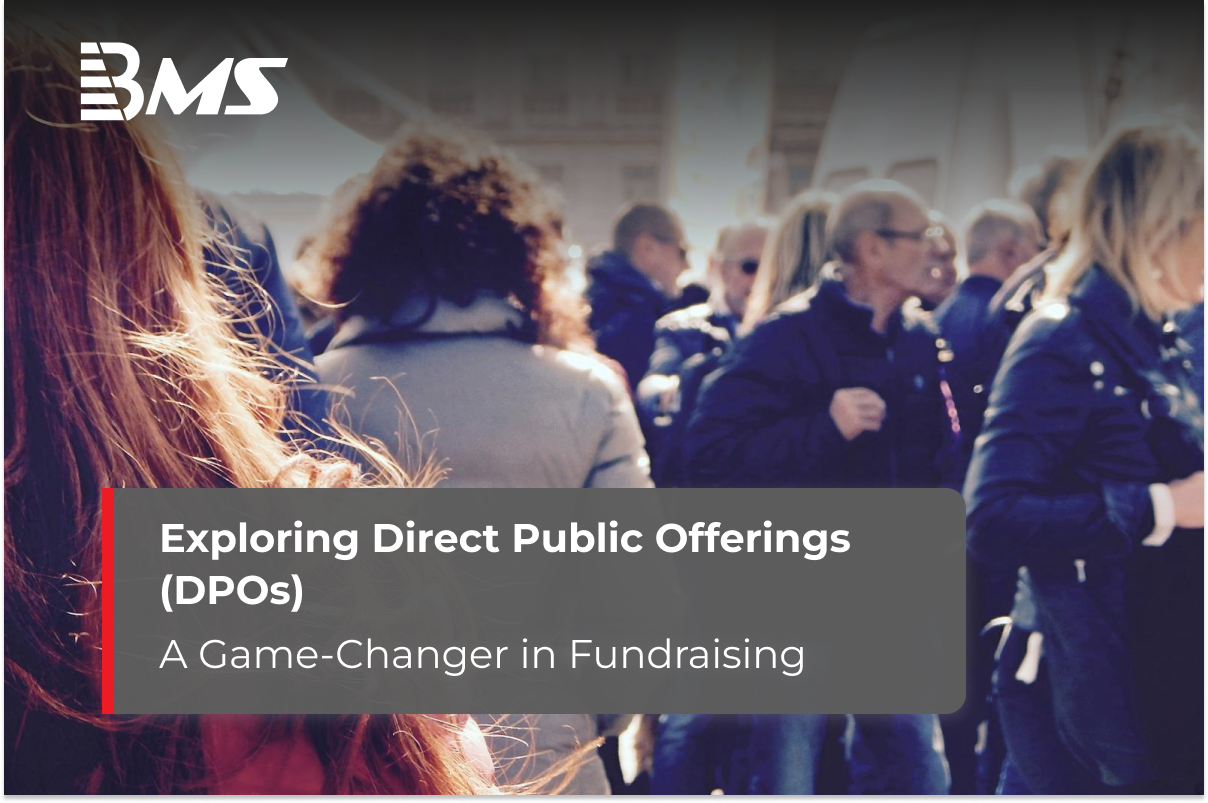Amidst the recent IPO fervor in the securities market, terms like private placement, offer for sale, and direct public offerings (DPOs) have become commonplace. Unlike the Initial Public Offering (IPO), Direct Public Offerings represent a distinctive fundraising approach, setting them apart from methods such as Follow-On Public Offerings (FPOs) and Offer for Sale (OFS).
DPOs, much like IPOs, empower companies to directly sell shares to the general public, sidestepping intermediaries like investment banks and brokers. This not only reduces the cost of funding significantly but also speeds up the funding process. Let's delve into the intricacies of this innovative fundraising method.

Unveiling the Dynamics of Direct Public Offerings (DPOs)
Direct Public Offerings (DPOs) emerge as a distinctive fundraising avenue, liberating issuers from intermediary constraints and placing significant control over critical terms. The issuer's authority extends to defining key elements such as offer price, duration, minimum investment, bid-ask spread, and settlement dates, strategically aligning them with the company's interests. This adaptability in terms becomes a defining feature of DPOs, presenting a dynamic and versatile fundraising approach.
Distinguished by a shorter preparation timeline, typically ranging from a few days to a couple of months, DPOs kick off with the release of an offering memorandum. This document introduces the issuer, outlines offered securities, and utilizes varied channels such as telemarketing, social media, ads, and meetings with existing shareholders for dissemination.
Stringent compliance with regulatory standards is pivotal as the issuer submits essential documents, including the offering memorandum and financial statements. Regulatory authorities scrutinize these submissions, evaluating the company's financial health and adherence to legal norms. Upon approval, the DPO commences, commencing with a tombstone ad and subsequently opening avenues for investment across diverse investor categories.
The DPO's culmination is signaled by the closing date, defined in the offering memorandum, either upon selling all securities or reaching the specified closing date, whichever comes first. With stipulated minimum and maximum shares, failure to meet the minimum triggers fund refunds. Conversely, oversubscription may prompt a first-come-first-serve or pro-rata allocation. Delving into the nuances of a DPO reveals its distinctive mechanics within the fundraising landscape.
Allotting DPO Securities: Navigating Beyond Traditional Exchanges
DPO securities, unlike IPO shares, don't have a trading platform on formal exchanges. However, they can enter over-the-counter markets for trading. DPOs are a more favorable option for smaller to medium-sized enterprises, offering direct capital infusion from the operational community.
Accessible Funding Through DPOs: Who Qualifies?
DPOs present an attractive avenue for companies eyeing public status without the means for an underwriter. This may be particularly appealing for businesses unwilling to dilute existing holdings to comply with regulations or those seeking to sidestep lock-in period agreements. Companies opting for a DPO can offer a range of securities, such as shares, preferred stock, REIT, and debt instruments. Notably, DPOs accommodate the simultaneous offering of multiple security types. In essence, DPOs serve as a versatile fundraising option, catering to the diverse needs of companies navigating the complexities of going public.
Navigating a Direct Public Offering: A Three-Step Process
Embarking on a Direct Public Offering (DPO) unfolds across three distinct stages - the preparation stage, regulatory approval, and exemptions to regulations. Commencing with the preparation phase, it entails the creation of an offering memorandum and strategizing the optimal channels for publicizing the offering. Transitioning to the regulatory stage, compliance with regulatory requisites takes center stage, involving the submission of essential documents to the relevant authority.
The regulatory authority may, at times, grant exemptions for DPOs, alleviating certain or multiple regulatory obligations for the issuer. These exemptions are communicated periodically, contributing to a nuanced landscape where issuers navigate the intricacies of regulatory compliance in pursuit of a successful DPO.
Comparing IPOs and Direct Public Offerings (DPOs)
IPOs and DPOs share the common goal of raising interest-free capital through the issuance of shares. However, their approaches differ fundamentally. In an IPO, new shares are generated, underwritten by an intermediary, and subsequently sold to the public. Conversely, a DPO involves the direct offering of existing shares to the public by the company itself, bypassing intermediaries. This grants greater flexibility to the issuer and allows them to sidestep the regulations associated with bank and venture capital funding.
While the cost of a DPO is notably lower than that of an IPO, it comes with inherent risks such as the absence of a guaranteed sale of shares and less promotional support. Additionally, unique features of an IPO, like the greenshoe option and book-building process, are unavailable in a DPO. IPO shares are listed on stock exchanges and traded through platforms, providing liquidity, whereas DPO shares are traded in the OTC market, potentially limiting liquidity.
Revolutionizing Fundraising through DPOs
DPOs transform fundraising, providing flexibility and cost-effectiveness. The three-step process demonstrates adaptability. For global triumph, BMS Auditing, equipped with proficiency in multilingual web presence, propels enterprises into international realms. Whether navigating DPO intricacies or expanding globally, BMS Auditing guarantees triumph, reshaping the landscape of fundraising and global outreach possibilities.
